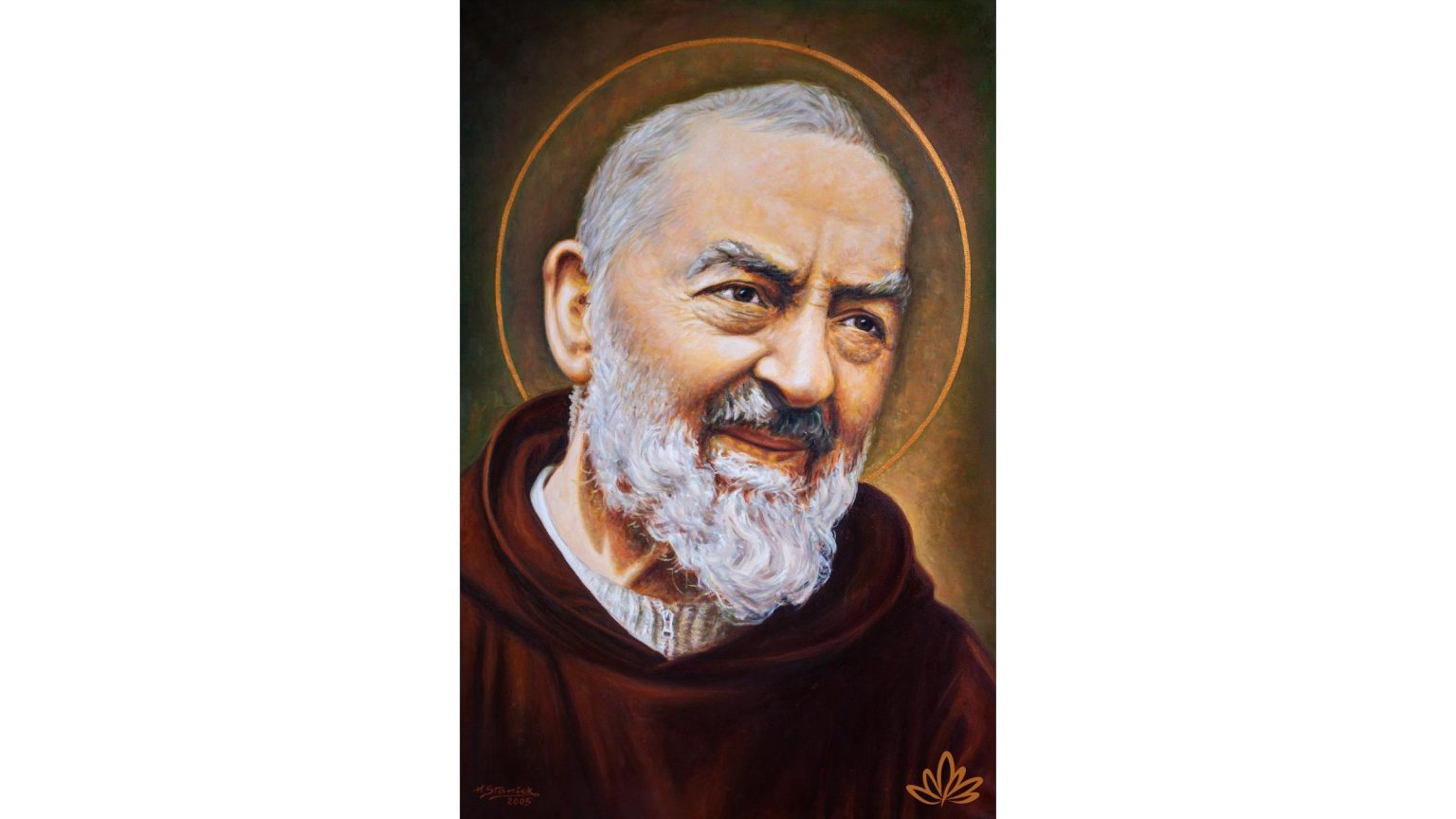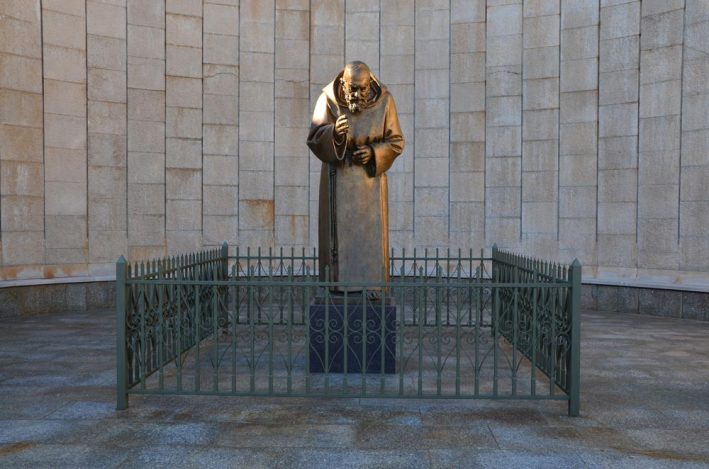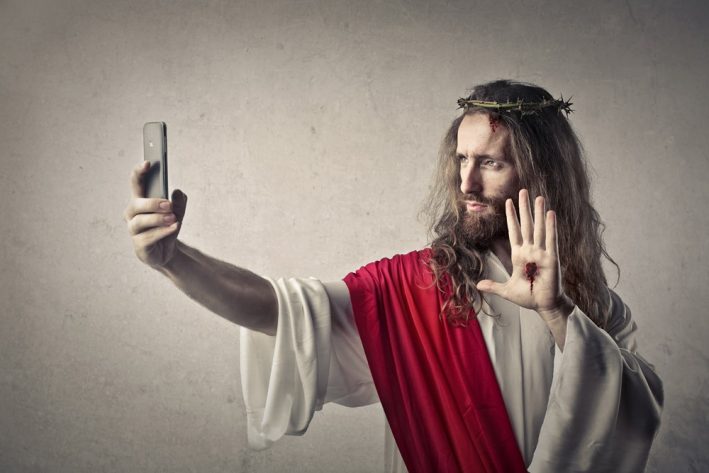The Healing Secrets of Padre Pio

Predictably enough, there appears to be a common thread winding its way through a great many biographies of spirit-led individuals: they are alternately venerated and vilified.
They are also subject to illnesses, accidents, and other roadblocks (both natural and human-erected) that most of us would expect to slow them down or shut them up completely forever, but they just keep on going, and going, and going!
Italian priest Padre Pio is yet another of these amazing individuals.
He was born Francesco Forgione, on May 25, 1887, in Pietrelcina, Italy. By age five, he realized he wanted to be a saint. That’s pretty early!
Because his family was poor, young Francesco tended the family’s small flock of sheep, which caused him to miss a lot of school, so his advancement as a scholar suffered.
He was also ill frequently as a child, and throughout his life. At six, he suffered from gastroenteritis; when he was ten, he caught typhoid.
After about three years of school, Francesco told his parents he wanted to become a friar. They inquired into the option and were told he needed more education before he could join the friars, so they hired a private tutor for him. His father even sailed to America to earn the money required to pay the tutor.
At age 15, Francesco officially took the name “Padre Pio.” After joining the Friary of St. Francis, he experienced repeated bouts of serious illness as well as religious ecstasy. Neighboring friars reported that strange noises emanated from his cell at night. Padre Pio mentioned experiencing personal attacks from the devil, and said his cell was where these battles occurred.
Just two years into his stay at the Friary, Padre Pio became extremely ill. Hardly able to eat, he was sent to the mountains with an expectation that his health would improve, and that he would recover. When that didn’t happen, he was sent back to his family.

Undaunted by the setback, Pio continued to study. In 1910, Padre Pio was ordained as a priest and allowed to remain at home because of his poor health. During one prayer session, a fellow worshipper reported watching as Padre Pio levitated off the floor.
By 1919, Padre Pio was well known to many locals, who began to talk about his supernatural abilities. People who came to know him well claimed he could levitate and perform healing miracles. Some even said he could appear in two places at once, or bilocate.
Known for the power of his prayer, his connection to spirit, and the quality of his teaching, he counseled, “Pray, hope, and don’t worry. Worry is useless.”
Padre Pio continued to battle additional illnesses for the rest of his life.
He is one of my favorite examples of someone who used confession to create personal healing. He advised everyone to make a habit of confessing once a week, like clockwork, to remove the emotional and spiritual roadblocks caused by retaining (instead of releasing) a negative view of oneself.
Gradually at first, but progressively in greater numbers, pilgrims began to flock to the village, desiring to meet Padre Pio, to receive his blessing, to hear his words of counsel and to go to confession.
He was famous for disregarding many of the Catholic Church’s rules. He would receive Confession and give Communion to Catholics and non-Catholics alike, believing (as I do) that all human beings are equally beloved and deserving of divine blessings. He was all about inclusion, not exclusion; he was way, way ahead of his time.
When Padre Pio passed away on September 23, 1968, more than 100,000 people attended his funeral.
THE GIFTS OF PADRE PIO
The most famous of Padre Pio’s gifts was the stigmata – the appearance of bodily wounds in locations that correspond to the crucifixion wounds of the Christ. The first person to ever receive the stigmata was St. Francis of Assisi. Pio had the stigmata for over 50 years; he hid the marks on his hands with gloves.
My favorite story about Padre Pio is about the time a journalist asked him if he caused the gift of his stigmata to appear through his own mental focus. He laughed and replied, “Go out to the fields. Look very closely at a bull. Concentrate on him with all your might. Do that and see if horns grow on your head!” Padre Pio is my kind of guy!

Padre Pio also was known for the gifts of healing, prophecy, performing miracles, speaking in tongues, levitation, and my personal favorite, bilocation (being seen in two places at the same time). He was legendary for bi-locating, which is one of the (obviously) more advanced spiritual gifts.
However, his biggest gift, in my opinion, and the one that is central to my teachings, was his ability to “read hearts” or see into souls. He could get right to the core of a person’s problem, below both their conscious and unconscious thoughts—at the level of their soul. He would zero right in on the one thing they were doing that was causing them harm, and he would gently tell them what it was—perhaps, for example, they had spoken coldly to another or refused to forgive yet another. Whatever it was, he always knew. He was a master at this type of healing and used it with everyone he met. He did this, in part, by holding the practice of Confession, which he advised should be done once a week, like dusting a room. He would sometimes spend 20 hours a day listening to local townspeople as well as visitors from around the world who had come to reveal their mistakes to him and obtain absolution. It was one of the most valuable services he could offer those in his spiritual care.
Journaling: Modern-Day Confession

All religious traditions know the value of admitting our wrongdoings, and they have some kind of practice for it: Christian churches all have some form of individual or group atonement. So do other religions: in Judaism, it’s Vidui; in Islam, they call it Declaration; in shamanism among Eskimo people, a public confession is carried out by the shaman on behalf of the patient he’s trying to cure; in West Africa, the Dagara tribe conducts elemental rituals, such as a water ritual to clear detrimental energies so that one may shed their issues and again be in touch with their higher purpose in life.
Today, unburdening our shame is easier than ever. One of the main practices I espouse for this purpose is journaling—writing down your thoughts and feelings as they occur so you can both know yourself and get your truth out.
It’s also important to share your wounds, sins, and secrets with someone else, as the confession of old used to help us do. Today you’d want to talk to your energy healer, shaman, or therapist (not your family member or friend, who may very well have their own agenda for you). It’s very important to be able to express where you think you went wrong, both to your journal and to someone else. Declaring to another your failings, your core wounds, is a fundamental tool for healing.
The practice of admitting our wrongs and clearing ourselves of them is a whopping 7 steps out of the 12 steps in the 12-Step Program. If we don’t do it, we end up carrying around a lot of sludge from our past that can really keep us stuck—and, in the worst-case scenario, sick.
Connecting with Others
Many of the things I’m advocating —the awareness and expression of your thoughts and feelings and regrets—are to support you in getting connected to yourself. One of the biggest faults of our modern-day culture, and a major reason so many people are forced to rely on alcohol and drugs, including prescription drugs like anti-anxiety medication, anti-depressants, sleeping pills, and the like, is that we’ve dropped many of the things that in previous times supported us. We don’t go to church anymore, so we have lost the idea of doing some sort of confession as well as the connection with others that we crave. Of course, we stopped going because church lost its power, just as most human institutions eventually do. But that didn’t change our need for it—for the method of declaring our sins, as well as the connection to spirit and the sense of community, church was once there to provide. That’s why I make it possible most Tuesdays to get together with me and my community live on Facebook and YouTube; these purposeful gatherings create the opportunity to experience the Light, unburden ourselves from guilt and self-punishment, and fulfill our need for connection to one another and to Source. You can register for show alerts here.

So, when I ask myself what causes healing, one thing that I have found for sure, though I don’t yet completely understand why, is that connection heals. Being in a group heals. I have found that healing takes place much more in a group than it does individually, which is why I always work with groups. I discovered 40 years ago that I could be much more effective with if an individual if I worked with him or her in a group. As Jesus said, “Where two or three are gathered together in my name, I am there in the midst of them.” It’s the light that heals and the light comes from each one of us; we share it and we amplify it for the benefit of each other.
If you are interested in learning more about energy healing, and joining a community of like-minded healers, that is exactly what we provide in our flagship LifeForce Energy Healing® certification programs. You can start at Level I by clicking here, which grants you access to our Soul Family group, designed to provide us all the connection we need to cultivate healing.

